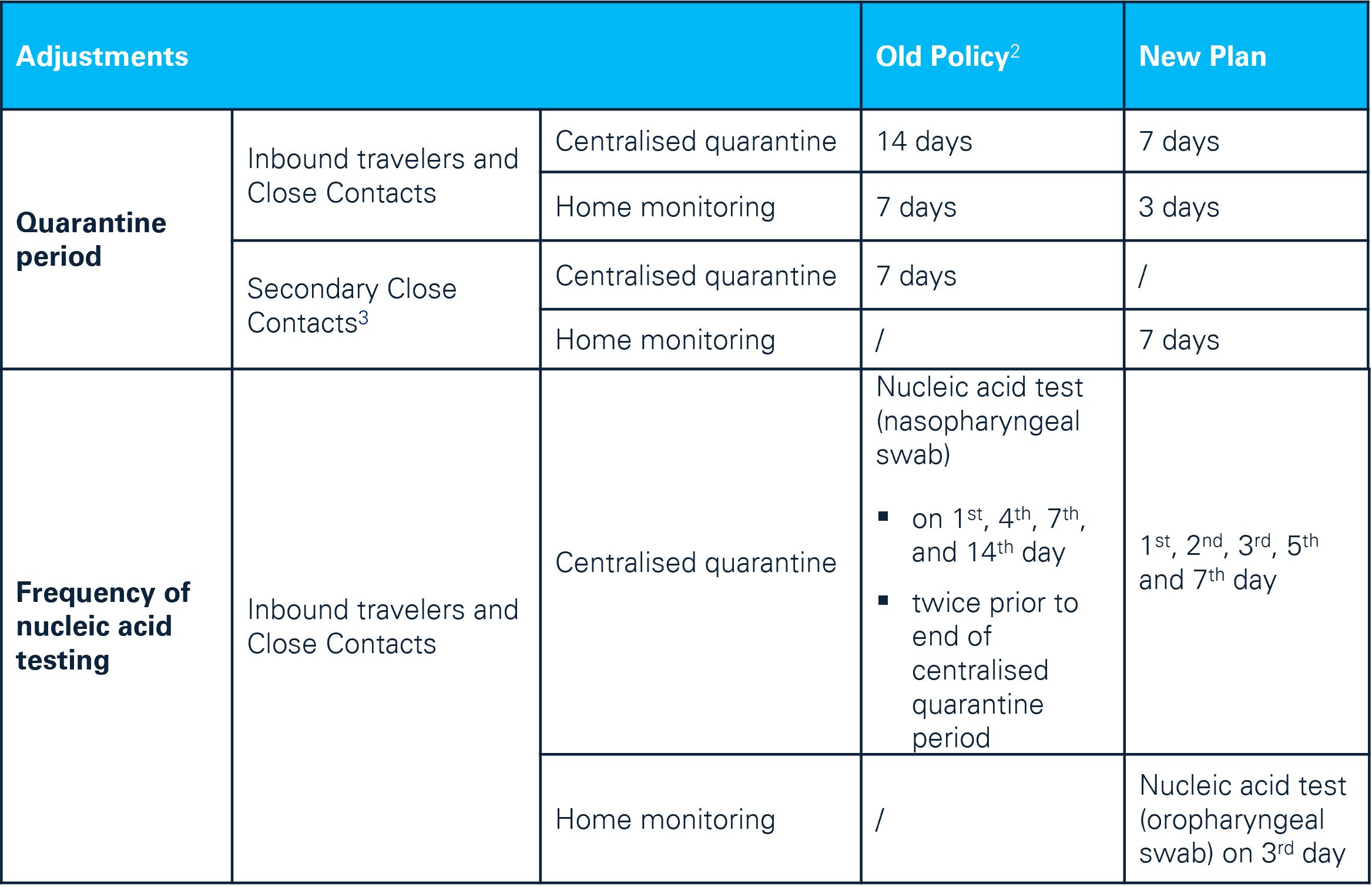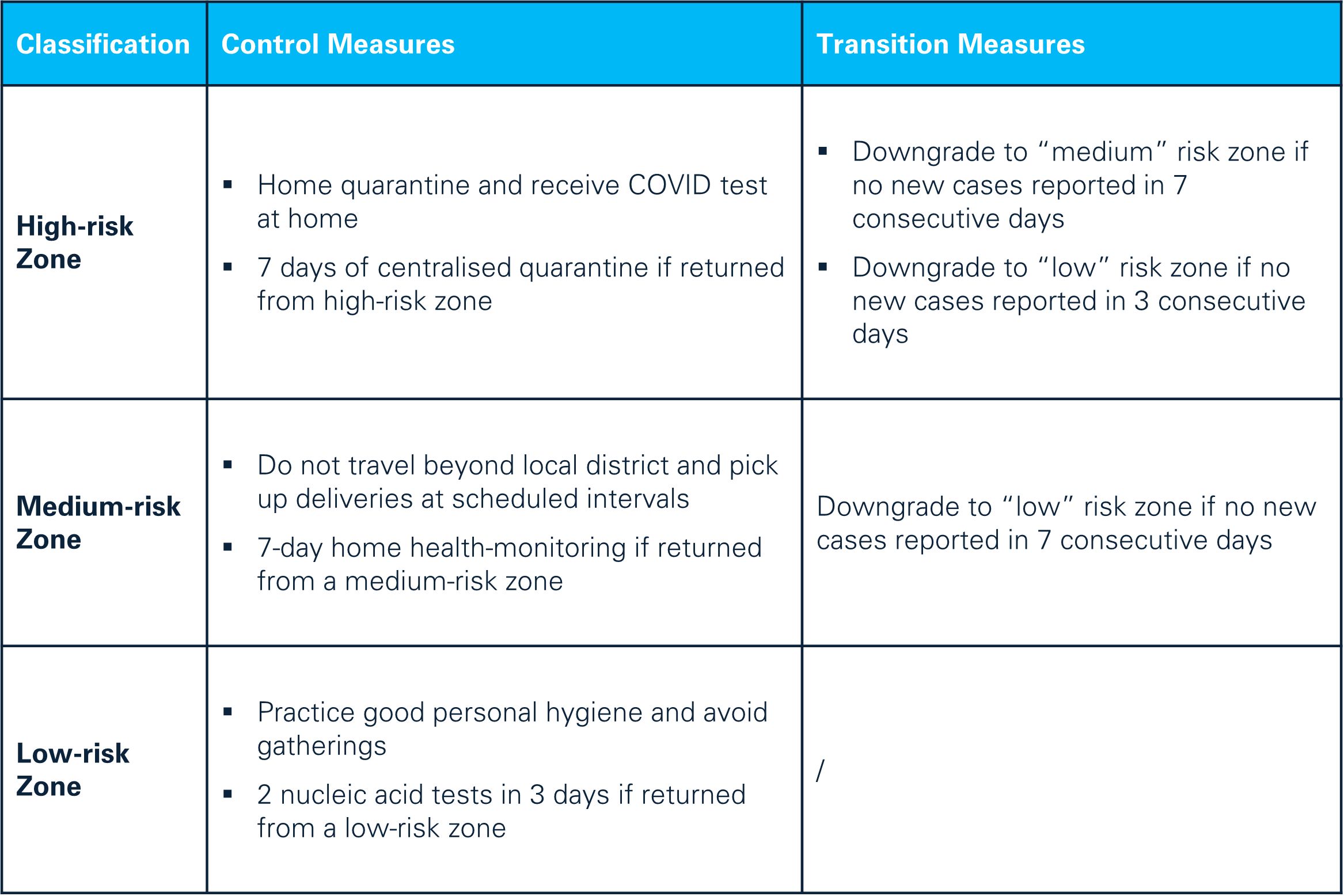Abstract
China has further eased cross-border travel restrictions and quarantine requirements after releasing the ninth edition of the COVID-19 Epidemic Prevention and Control Measures, shortening the quarantine period for inbound travelers to 7-day centralised quarantine followed by 3-day home health-monitoring (“7+3 policy”). While there has been a gradual recovery of inter-regional movements and rebound of business activities, companies and individuals need to strike a balance between carrying out necessary business activities which require cross-border and/or inter-regional travelling and managing compliance risks; learn to adapt to changes by deploying flexible work and employment arrangements; and identify cross-border tax, social security and legal issues in order to mitigate risks and costs.
Background
On 28 June 2022, in order to ensure adherence to the overall strategy of "preventing inbound cases and domestic resurgence" and the dynamic zero-COVID approach, the Joint Prevention and Control Mechanism of the State Council published the ninth edition of the COVID-19 Epidemic Prevention and Control Measures (“the Measures”) to shorten quarantine period and optimise risk area classification standard. In the meantime, the Ministry of Industry and Information Technology announced on 29 June 2022 that China removed the asterisk marks on digital travel history codes across the country, aiming at balancing epidemic control and economic development.
Salient Points
Shortened quarantine period for inbound travelers and Close Contacts1

[1] Close Contacts herein refer to individuals who have been in close contact with patients tested positive for COVID.
[2] The quarantine period and control measures as outlined in the Old Policy are based on the eighth edition of the COVID-19 Epidemic Prevention and Control Measures. Local practice varied across the country.
[3] Secondary Close Contacts herein refer to individuals who have been in close contact with Close Contacts with patients tested positive for COVID.

- In June 2022, several provincial and municipal government authorities in China adjusted the domestic and cross-border travel restrictions to boost inter-regional travel and business activities.
- On 30 June 2022, China removed the asterisk marks on digital travel history codes across the country to make travel easier.
KPMG observations
The latest amended policies as stated in the ninth edition of the Measures show a positive signal that the government is optimising epidemic control and prevention measures to ensure quicker and more precise measures to balance epidemic control and economic development. Following simplified Chinese visa application procedures (Please refer to "KPMG Tax Alert No. 12" for details) and the increased number of international flights, China’s logistics sector and international trade as well as cooperation are recovering. While there has been a gradual recovery of inter-regional movements and rises in business activities, companies and individuals should closely monitor the following aspects:
- Closely follow updates to immigration policies: in view that China has adjusted and optimised its travel policies and quarantine requirements lately, companies and individuals should pay close attention to immigration and quarantine requirements stipulated by the government and authorities in the departing and destination countries/regions; evaluate employees’ relocation and movement plans; and formulate cost-effective relocation strategies.
- Formulate talent strategies: The growing needs for domestic and international travel require companies and individuals to develop strategies to facilitate flexible work and employment arrangements. Companies should adapt to these new trends in order to address tax, social security, immigration, and employment issues for risk mitigation and talent retention purposes.
- Evaluate cross-border travel arrangements: Individuals who are required to travel to China for work or other business activities are recommended to perform routine review of their travelling plans, including the length, nature and purposes of the activities (to be) performed while outside their usual place of work, in order to identify potential risks associated with the arrangement, and deploy relevant strategies for risk and cost minimisation reasons.
KPMG will closely monitor regulatory updates. We also welcome companies and individuals to contact us to learn about the latest developments and cutting-edge information. If you encounter any questions in the above practical operation, please contact KPMG.
Connect with us
- Find office locations kpmg.findOfficeLocations
- kpmg.emailUs
- Social media @ KPMG kpmg.socialMedia


